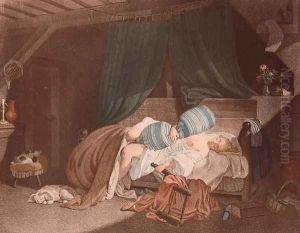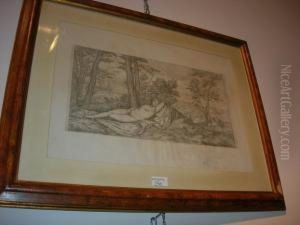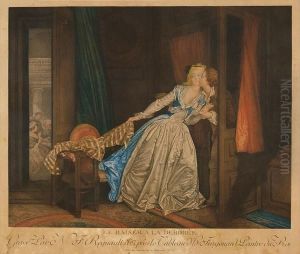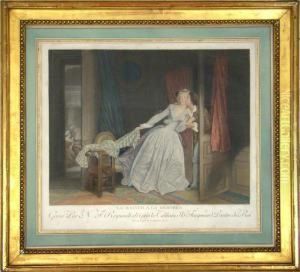Nicolas Francois Regnault Paintings
Nicolas Francois Regnault was a French painter and engraver who was born on December 2, 1746, in Paris, France. He was part of a family of artists and became known for his portraits and historical paintings. His father, Jean-Baptiste Regnault, was a noted French painter, and Nicolas Francois followed in his footsteps, developing a career in the arts during a period of significant political and social change in France, which included the French Revolution and the rise of Napoleon.
He studied art under his father and possibly under other masters of the time. Nicolas Francois Regnault's work was influenced by the neoclassical style that was predominant during the late 18th century. This style emphasized clarity of form, sober colors, and the depiction of classical themes and subjects, often with moralizing messages or in reference to the virtues of antiquity.
Regnault's career unfolded during a time when the patronage system was undergoing changes, with the traditional support of the monarchy and church being supplemented and sometimes replaced by private patronage and the emerging concept of the public art exhibition. Regnault produced works that were in line with the tastes and philosophies of these times, which included a renewed interest in the classical ideals of beauty and harmony.
Despite the overshadowing fame of his father, Nicolas Francois made his own mark with his artwork. His paintings and engravings were exhibited at the Paris Salon, an official art exhibition of the Académie des Beaux-Arts in Paris. The Salon was the foremost art exhibition in France and being accepted to exhibit there was a significant accomplishment for any artist of the time.
Nicolas Francois Regnault's life spanned a period that saw both the height of the French monarchy and its subsequent downfall. He witnessed the upheavals of the Revolution and the rise of Napoleon Bonaparte. These events inevitably influenced the art world, as they did all sectors of French society, and artists like Regnault were required to navigate the changing political landscapes.
Regnault died on August 20, 1810, in Paris. While he may not be as widely remembered as some of his contemporaries, his contributions to French art during a time of great change are nonetheless a part of the rich tapestry of the history of French painting.



